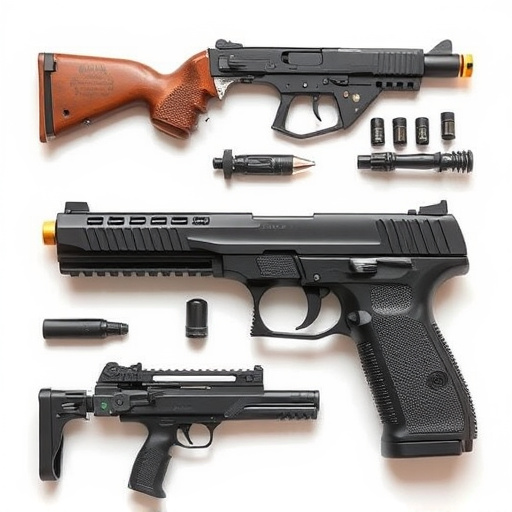Homeowners increasingly opt for non-lethal home defense weapons as a responsible alternative to firearms, choosing from pepper spray, tasers, stun guns, and noise makers to incapacitate or deter intruders temporarily without causing harm. Understanding local laws regarding these weapons is crucial, as regulations vary by region. Prioritizing safety through training, secure storage, maintenance, and de-escalation techniques ensures responsible use while adhering to legal parameters.
Staying safe at home is a top priority for many, leading many to explore non-lethal home defense weapons. This comprehensive guide delves into the world of non-lethal self-defense tools designed to deter intruders without causing fatal harm. We’ll explore various types, their effectiveness in real-world scenarios, and crucial legal considerations to ensure responsible ownership. Learn how to choose the best option for your peace of mind while adhering to safety protocols.
Understanding Non-Lethal Home Defense Weapons
In today’s world, many homeowners are seeking effective yet responsible ways to protect their spaces and loved ones, leading to an increased interest in non-lethal home defense weapons. These tools are designed to incapacitate or deter intruders without causing permanent harm, offering a middle ground between conventional firearms and more traditional self-defense methods. From pepper spray and tasers to stun guns and noise makers, these weapons provide a range of options tailored to different needs and comfort levels.
Understanding the distinction between lethal and non-lethal force is crucial for responsible home defense. Non-lethal weapons are engineered to disrupt an assailant’s mobility or senses temporarily, allowing homeowners time to escape or call for help. This approach prioritizes safety and minimizes risk while still providing a powerful deterrent against potential threats, making them valuable assets in the ongoing conversation about personal security and the right to defend one’s home.
Types and Their Effectiveness
When it comes to protecting your home, non-lethal weapons offer a range of options for deterring intruders without causing permanent harm. These weapons are designed to incapacitate or temporarily disable an attacker, providing valuable time for occupants to escape or call for help. One popular choice is the pepper spray, which can disrupt an assailant’s vision and breathing, allowing you to create distance and seek safety.
Another effective non-lethal home defense weapon is the stun gun, also known as a Taser. It uses electric current to temporarily paralyze the target, making it an excellent option for neutralizing armed or aggressive individuals. Additionally, noise devices like personal alarms and air horns can startle intruders and alert neighbors of potential danger. These non-lethal options provide homeowners with a sense of security while adhering to legal guidelines regarding self-defense weapons.
Legal Considerations and Safety Tips
When considering home defense weapons, it’s crucial to understand the legal landscape surrounding their use. Different regions have varying laws regarding what constitutes a legal non-lethal weapon and under what circumstances it can be employed. Owning and using force for self-defense must adhere to strict guidelines to avoid legal repercussions. It’s essential to research and comply with local legislation, which may include restrictions on the type, storage, and deployment of certain weapons.
Safety is paramount when dealing with any home defense tool. Non-lethal weapons should be handled with the same care as any other firearm or blade. Secure storage, regular maintenance, and ensuring all users are trained in their proper use are critical. Additionally, keeping an up-to-date inventory and understanding de-escalation techniques can help avoid unintended consequences, making your home safer while adhering to legal parameters.
